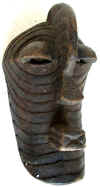 |
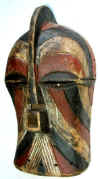 |
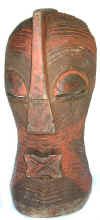 |
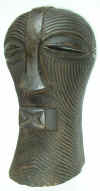 |
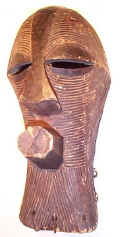 |
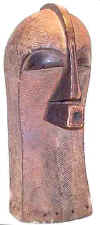 |
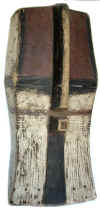 |
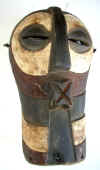 |
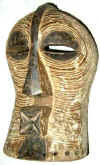 |
|
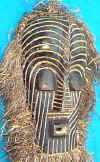 |
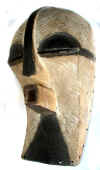 |
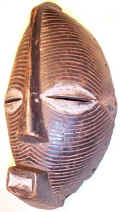 |
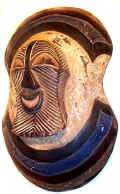 |
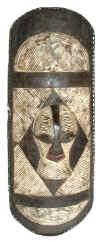 |
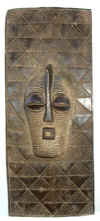 |
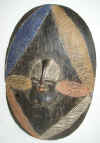 |
|
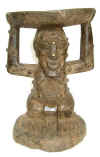 |
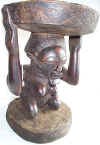 |
 |
|
TRIBAL AFRICAN ART
SONGYE (BASONGE, BASONGYE, BASSONGO, BAYEMBE, SONGE, SONGHAY, WASONGA)
Democratic Republic of the Congo
During the
16th century, the Songye migrated from the Shaba area, which is now the southern part of
the Democratic Republic of the Congo. Their history is closely linked to the Luba's, to
whom the Songye are related through common ancestors. Having waged war against one another
for a long time, the Songye and Luba later formed an alliance to fight the Arabs. They
settled on the left bank of the Lualaba River, on a savanna and forest-covered plateau.
Divided into many subgroups, the 150,000 Songye people are governed by a central chief
assisted by innumerable secret societies.
The Songye
traditionally relied mostly on farming and hunting for subsistence. Because the rivers
were associated with the spirits of deceased chiefs who were often buried in them, fishing
was not practiced except in times of great need. The artistic wares of the Songye,
including pottery made by women and weaving and metalworking done by men, were traded
extensively with their neighbors.
The Songye created a
sculptural style of intense dynamism and vitality. The works of Songye craftsmen are often
used within the secret societies during various ceremonies. They produced a large number
of figures belonging to the fetishist, who manipulates them during the rituals of the full
moon. Songye fetish figures vary in size from 4” to 60”. They are usually male
and stand on a circular base. Strips of metal, nails or other paraphernalia are sometimes
applied over the face, which counteract evil spirits and aggressors and channel lightings
against them. The top of the head and the abdomen are usually hollowed to allow insertion
of fetish material, called boanga. These
figures adopt a hieratic posture, the hands placed
on a pointed abdomen; on top of the head they have a horn or feathers reinforcing a
disquieting appearance. The fetishist would make the boanga with magic ingredients,
which he crumbled and mixed, thus obtaining a paste that was kept in an antelope horn hung
from the roof of the house. The magic ingredients consist of a wide variety of animal,
vegetal, mineral and human substances that activate and bring into play benevolent
ancestral spirits. The face is often covered with nails, a reminder of smallpox. The style
of Songye fetishes, carved from wood or horn and decorated with shells, is not as
realistic as the classic Luba style, and their integration of non-naturalistic, more
geometric forms is impressive. The figures are used to ensure their success, fertility,
and wealth and to protect people against hostile forces as lightning, as well as against
diseases such as smallpox, very common in that region. While smaller figures of this type
were kept and consulted by individuals, larger ones were responsible for ensuring the
welfare of an entire community.
In the Songye language, a mask is a kifwebe:
this term has been given to masks representing spirits and characterized by striations.
Depending on the region, it may be dark with white strips, or the reverse. The kifwebe
masks embodied supernatural forces. The kifwebe society used them to ward off
disaster or any threat. The masks, supplemented by a woven costume and a long beard of
raffia bast, dance at various ceremonies. They are worn by men who act as police at the
behest of a ruler, or to intimidate the enemy. It can be either masculine, if carved with
a central crest, or feminine if displaying a plain coiffure. The size of the crest
determines the magic power of the mask. Mask, colors, and costume all have symbolic
meaning. The dancer who wears the male mask will display aggressive and uncontrolled
behavior with the aim of encouraging social conformity, whereas the dancer who wears the
female mask display more gentle and controlled movements and is assumed to be associated
with reproduction ceremonies. The use of white on the mask symbolizes positive concepts
such as purity and peace, the moon and light. Red is associated with blood and fire,
courage and fortitude, but also with danger and evil. Female masks essentially reflect
positive forces and appear principally in dances held at night, such as during lunar
ceremonies and at the investiture or death of a ruler. The mask had also the capacity to
heal by means of the supernatural force it was supposed to incorporate. The ritual of
exorcism consisted of holding the sick man’s mask while a magician acted as if he
were casting it into the fire. Kifwebe
mask representations also appear on other objects belonging to the kifwebe society
– grooved shields, for example, are adorned with a central mask. Buffalo masks with a
brown patina that have no stripes were used in hunting rituals.
The Songye also produce prestige stools, ceremonial axes, made of iron and copper and decorated with interlaced patterns, neckrests, bracelets and copper adzes.